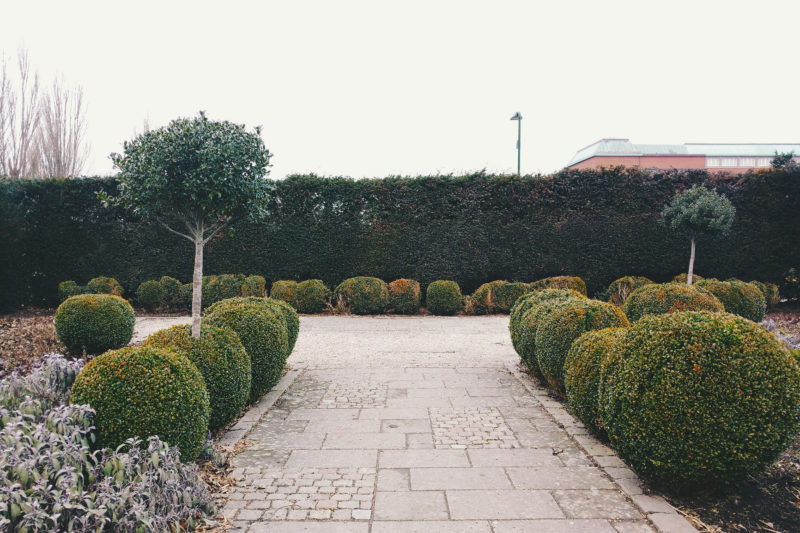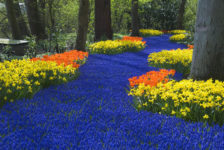Article by Emily Sinclair Discover why landscape architecture students should embark on a foreign exchange. There are many clear advantages to participating in an exchange program during your time in university. From learning a new language to experiencing a new culture, becoming a foreign exchange student can change your perspective on the world around you. As landscape architecture students, we all deal with the design of spaces and the surrounding environments in our projects. While we can study theory, and delve into case studies of monumental landscape works, there is no alternative to visiting the space in person. Traveling is always an option, but there are benefits to spending a semester abroad as a landscape architecture student. 10. Exposure to Projects As mentioned above, while studying a space can be useful to your studies and forming your personal design style, nothing quite takes the place of visiting a project in person. Landscape architecture is found worldwide and each country takes its own approach to the field. By traveling to new countries, you are not only opening your mind to new experiences, but also new philosophies and values. By exploring projects with your feet, eyes, and sketchbook rather than your textbook, you can draw your own conclusions and discover something you didn’t expect to find.

Kyrkogårdsförvaltningen, Malmö, Sweden. Credit: Emily Sinclair
By living in a city, rather than just visiting, you are exposing yourself to the daily activities that you might miss if you only visited for a few days and targeted the main sites. You are privy to the local color, small pocket parks, school playgrounds, bike paths and the countryside, which might not be apparent if you are checking items off a to-do list. You could also make friends with local people and take time to sit on a boardwalk or go to the beach. All of which are enhanced by actually living in a city and being immersed in the network of life that you just won’t experience through case studies and books. Being in a city for a long period of time also exposes you to seasonal changes as well as different weather situations, which may dramatically change a space. Additionally, you will have the opportunity to meet more residents, which will allow you to be aware of the local opinion and is often different than the award descriptions and media coverage.

Ribersborgsstranden in the Winter, Malmö, Sweden. Credit: Emily Sinclair
The most obvious reason to go on an exchange! One of the biggest differences for me was not only the different foods and customs, but also the values. In landscape architecture, there are many things that are valued such as healthy lifestyles and abundant green space, but the priorities change from city to city. In some cities, traffic concerns are treated with more importance than green networks. However, in other cities, the knowledge of plants and planting design is given more weight in schools. The distinct values become more apparent as you open yourself up to more of the designed environments, which you use daily.

A Swedish ‘Champagne’ Breakfast. Credit: Emily Sinclair
This point is not just about the different clubs, being engaged in a different university system can be a unique experience from what you expected. For example, in my home university in Canada we often take several courses in parallel to each other, partaking in one to three lecture courses, while simultaneously taking a studio. In Sweden, where I traveled for my exchange, the standard was to take only one course at a time but spend 20-40 hours per week on that course.
6. Make New Friends As a landscape architecture student, you are already primed to find people of similar interests. As you meet other exchange students you will also be disclosed to like-minded students from your host country. As a landscape architecture student participating in a landscape architecture exchange program, I found it extremely satisfying to learn that my knowledge of the Latin plant names was adequate enough to have conversations about plants in relation to landscape architecture and design. Being from a particularly small faculty it was also refreshing to learn new terms for materials or theories that I had previously never had to consider. Additionally, it was fascinating to be challenged as we navigated language barriers, trying to categorize and name things that I might have previously taken for granted. I found many people who shared similar goals and values to myself and will remain connected to them through the years.
5. Make Connections In that same line of thought, going on exchange introduces you to new professional connections. Through the university you’ll be revealed to professors and researchers and you’ll have the chance to meet professionals and up-and-coming practitioners through your classmates. These connections may illustrate a line of work or an internship you had not previously considered. Universities and other establishments often have seminars or symposiums, which are also great opportunities to learn about new theories and research.
4. Looks Great on a Resume This is more of a general point, but it’s true. By including your exchange on your resume, you are telling your potential employer that you are responsible and adaptable. They can also assume that your time abroad gave you a more international perspective in the field, which could prove useful in a working environment. In addition to these points, most people will recognize that the undertaking of an exchange program, even simply the process of applying, organizing your documents, transcripts, visas, and finding yourself in a new city can be a complex challenge. This demonstrates that you are an excellent problem solver.
3. Travel As a foreign exchange student, you aren’t just experiencing a new city, it’s a new country and, sometimes, a new continent. As a student from North America, the ability to travel to disparate European countries while on exchange in Sweden was life changing. I took my time there as an opportunity to not only explore Sweden to its fullest, but also the neighboring countries. Sometimes it was a day trip by train, or a long weekend to another country. Being in a different continent made the urgency to see it all so much more of an achievable task.

Bern, Switzerland. Credit: Emily Sinclair
Being abroad brings you new scholastic and worldly opportunities to test your knowledge and skills. You will be able to take the things you have learned up until this point and relate them to varying problems and contexts. You will find that the things that are at the forefront of your teachers’ and peers’ minds usually are not the same in a different school. This gives you the chance to explore unique ways to integrate these into your projects. You are also tested in your ability to observe and document the space around you. One of the greatest tools a landscape architect or landscape architecture student can carry with themselves is a sketchbook so make sure to stock up and keep record of your trip, you will not regret it.

Always Bring a Sketchbook. Credit: Emily Sinclair
After you graduate, these opportunities are less likely to present themselves. Once you finish school you will have significantly less flexibility to run off and live in another country for months ‘just for the experience’. Most schools have systems in place to make the transition easy, from connections with previous participants to transferring credits, your department’s advisors are likely to have the answer. So, do not let the challenge daunt you, talk to your faculty today about exchange opportunities available to you!
Recommended Reading:
Featured image: Slottstradgarden | Malmö, Sweden | Emily Sinclair | 2017
Published in Blog















